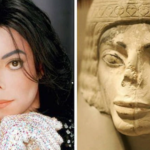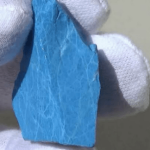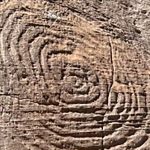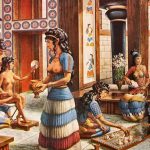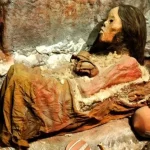The statue depicts a woman bearing an offering.

A painted wooden statuette of a woman carrying offerings. Middle Kingdom, 12th Dynasty, c. 1963-1862 B.C.
The Ancient Egyptians believed in physical offerings for spiritual sustenance. Therefore, in funerary scenes depicted upon tomb walls, you will see numerous men and women carrying objects to be buried alongside the deceased.
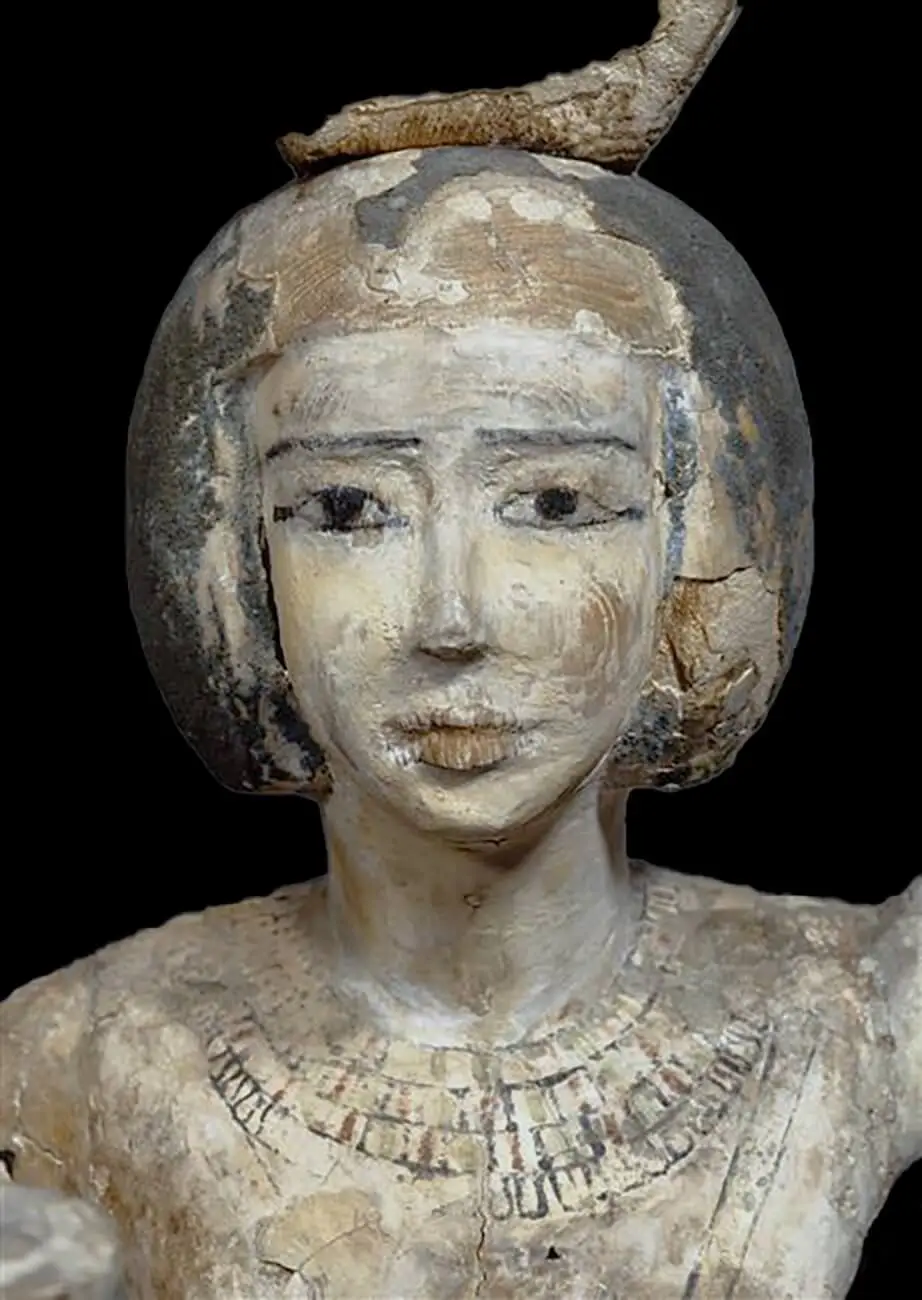
Not only were these items of religious significance, but also every day objects the person may need upon their journey through the Duat to the Field of Reeds.
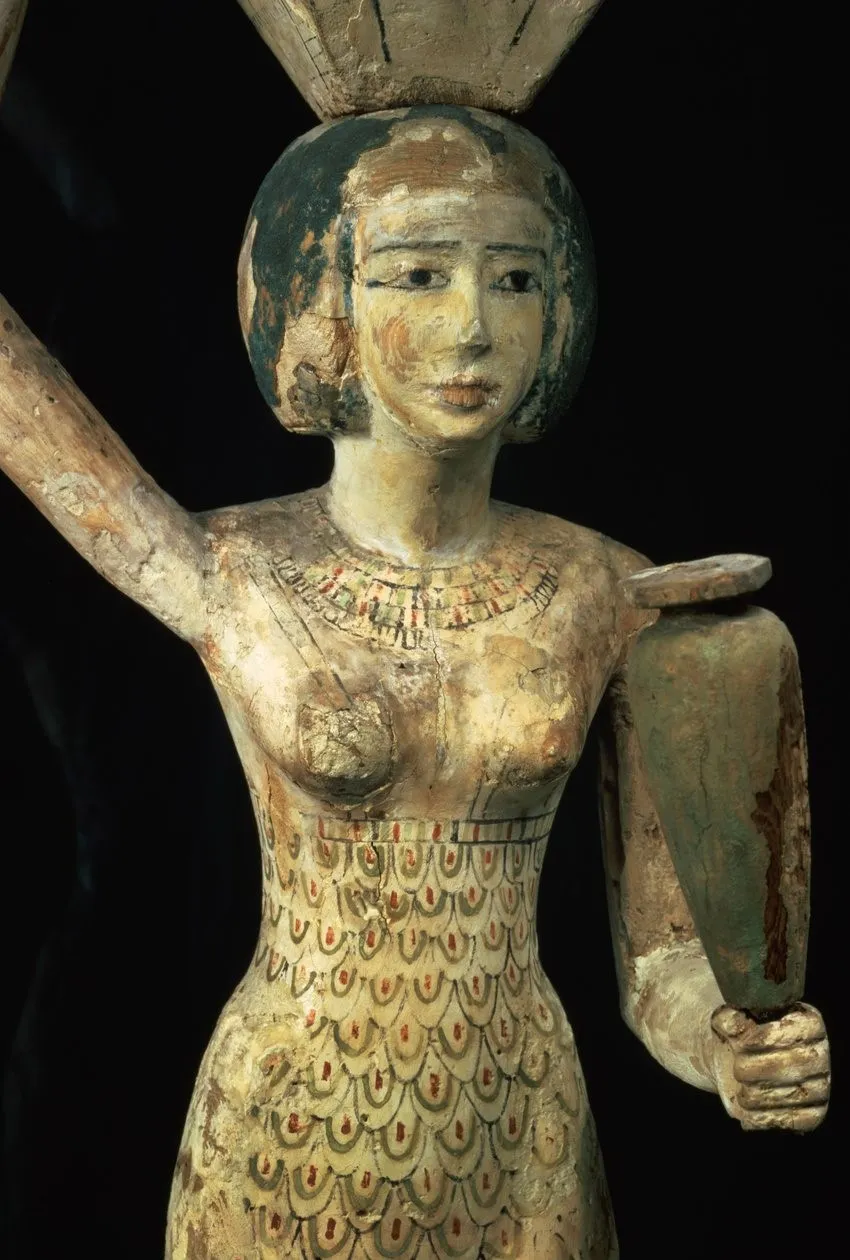
Therefore, within tombs not plundered in antiquity, it would be common for archaeologists to discover an abundance of food and drink, as well as clothing, walking sticks, chairs, tables, and even boat oars (oars were discovered around the burial chamber of king Tutankhamun to help his spirit sail with ease upon the Solar Barque through the hours of the night)… and the list of varied items for the dead continues.

This figure of a woman, has her holding a basket and carrying a vase. This was likely a funerary item, to present the dead with an eternal gift of offerings. To the Egyptian, art, including statues, was not for aesthetic, but functional.
The Egyptians would believe this statue was animated spiritually, and was placed in the tomb offering chamber, to provide the deceased with whatever objects the woman was carrying for eternity.
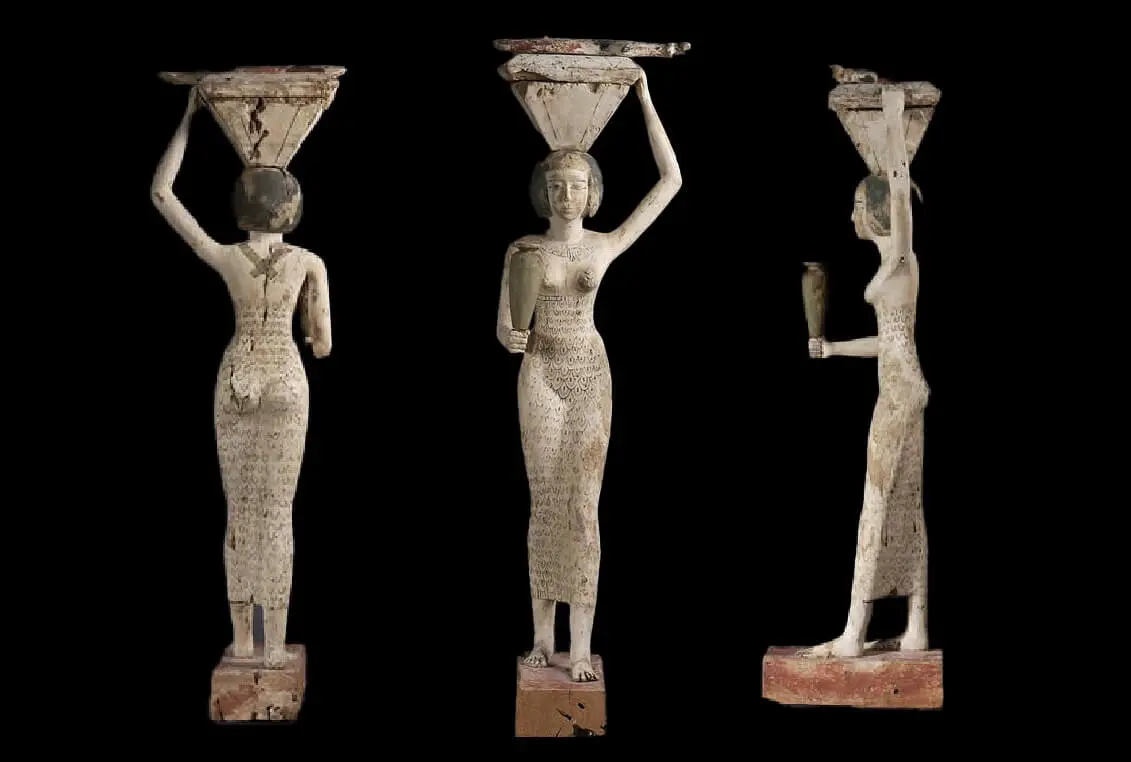
Offerings would be continued for many years by the families and sometimes ‘cults’ that formed around important figures.
